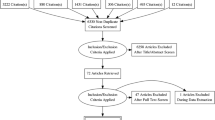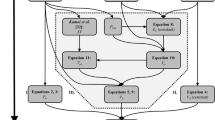Abstract
Multi-beat end-systolic elastance (EMB) is considered a gold-standard index of ventricular contractility. However, it is difficult to measure clinically due to the need for transient manipulation of ventricular preload or afterload. We compared the performance of 5 ‘single-beat’ methods that do not require loading interventions, for estimating the equivalent of EMB. In 7 sheep instrumented with a micromanometer/conductance catheter, single-beat methods were compared with EMB, obtained after transiently decreasing preload or increasing afterload under a broad range of heart rates and inotropic conditions. The single-beat elastance (ESB) method described by Shishido et al. (Circulation 102(16):1983–1989, 2000) had the highest correlation (R = 0.69, y = 0.52x + 0.43) with EMB, although the absolute accuracy was poor. Interestingly, for all methods tested, a higher correlation was observed when EMB was obtained with an afterload increase (R = 0.47 – 0.78) rather than a preload reduction (R = 0.07–0.57). Within-animal regression coefficients were higher than those obtained from pooled data, with excellent within-animal correlation observed for Shishido et al. method (0.73 ≤ R ≤ 0.96) when using afterload increase as the loading intervention. We conclude that (1) current methods perform better when using an afterload increase to obtain reference EMB, (2) intra-individual ESB comparisons may be more reliable than inter-individual comparisons and (3) Shishido et al.'s method demonstrated the strongest correlation with EMB. Current ESB methods have limited and variable accuracy, but may hold promise for tracking relative changes in ventricular contractility in individuals.







Similar content being viewed by others
References
Kjorstad KE, Korvald C, Myrmel T (2002) Pressure-volume-based single-beat estimations cannot predict left ventricular contractility in vivo. Am J Physiol Heart Circ Physiol 282(5):H1739–H1750
Shishido T, Hayashi K, Shigemi K, Sato T, Sugimachi M, Sunagawa K (2000) Single-beat estimation of end-systolic elastance using bilinearly approximated time-varying elastance curve. Circulation 102(16):1983–1989
Chen CH, Fetics B, Nevo E, Rochitte CE, Chiou KR, Ding PA, Kawaguchi M, Kass DA (2001) Noninvasive single-beat determination of left ventricular end-systolic elastance in humans. J Am Coll Cardiol 38(7):2028–2034
Senzaki H, Chen CH, Kass DA (1996) Single-beat estimation of end-systolic pressure-volume relation in humans. A new method with the potential for noninvasive application. Circulation 94(10):2497–2506
Takeuchi M, Igarashi Y, Tomimoto S, Odake M, Hayashi T, Tsukamoto T, Hata K, Takaoka H, Fukuzaki H (1991) Single-beat estimation of the slope of the end-systolic pressure-volume relation in the human left ventricle. Circulation 83(1):202–212
Baan J, van der Velde ET, de Bruin HG, Smeenk GJ, Koops J, van Dijk AD, Temmerman D, Senden J, Buis B (1984) Continuous measurement of left ventricular volume in animals and humans by conductance catheter. Circulation 70(5):812–823
Baan J, Van der Velde ET (1988) Sensitivity of left ventricular end-systolic pressure-volume relation to type of loading intervention in dogs. Circ Res 62(6):1247–1258
Acknowledgements
J.P.M is supported by a co-funded Career Development Fellowship from the National Health and Medical Research Council of Australia and Future Leader Fellowship from the National Heart Foundation of Australia. The Heart Research group at MCRI is supported the Victorian Government’s Operational Infrastructure Support Program.
Author information
Authors and Affiliations
Corresponding author
Ethics declarations
Conflict of interest
The authors declare that they have no conflict of interest.
Rights and permissions
About this article
Cite this article
Wo, N., Rajagopal, V., Cheung, M.M.H. et al. Assessment of single beat end-systolic elastance methods for quantifying ventricular contractility. Heart Vessels 34, 716–723 (2019). https://doi.org/10.1007/s00380-018-1303-5
Received:
Accepted:
Published:
Issue Date:
DOI: https://doi.org/10.1007/s00380-018-1303-5




